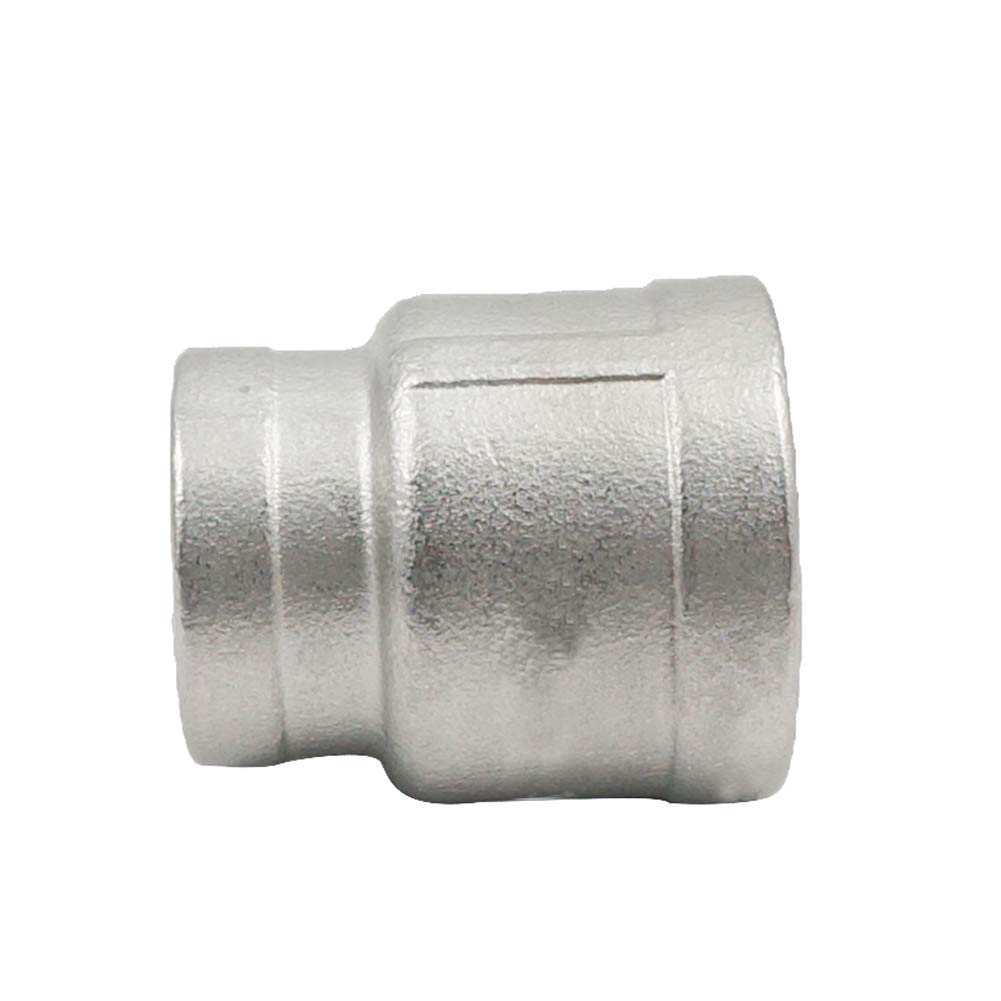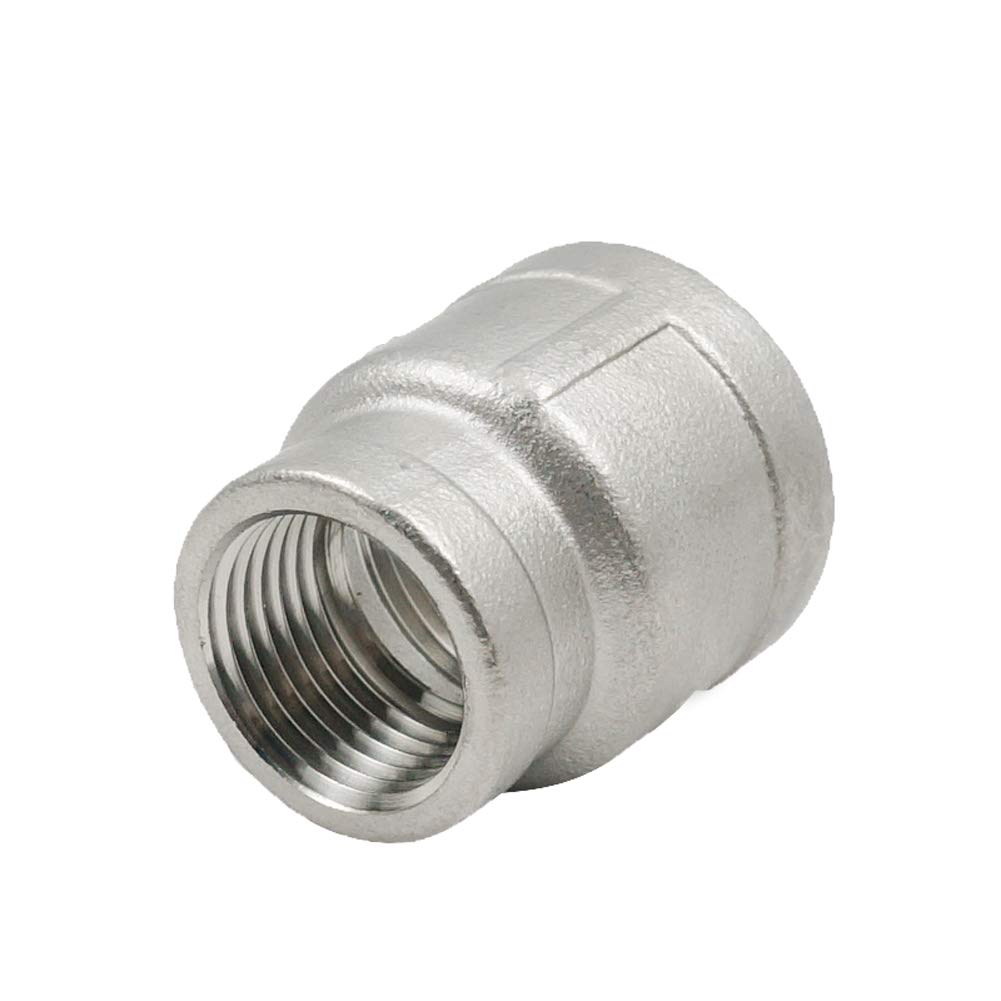Product Description
PRODUCT DESCRIPTION
Chlorinated polyvinyl chloride (CPVC) is a unique polymer after polyvinyl chloride chlorination. Ordinary PVC molecular chlorine content is 45%, the chlorinated polyvinyl chloride (CPVC) molecules chlorine content is about 64% to 68%, up to more than 70%.
CPVC tensile capacity is higher than the UPVC, PP, PP-B, PP-RH, PB, HDPE, PE, PE – X RT, etc; its thermal expansion coefficient is lower than the PP, PE, PB; thermal conductivity is lower than that of PP, PE, PB and metal pipe; the temperature resistance and resistance to deformation ability is better than that of PP, UPVC, ABS and HDPE.
The series of CPVC pipes and fittings can match the standard of DIN 8079 and DIN 8080.
FEATURES OF PRODUCT
Safety and Health:
The extremely low rate of harmful bacteria breeding is superior to drinking water hygiene standard designed by both the World Health Organization and the People’s Republic of China Ministry of health. Thereby it was recommended for medical system.
Flame Retardant:
Limited oxygen index of CPVC material is 60%. The minimum igniting temperature is 482*C. No dropping fire, very low smoke rate and no poisonous gas.
Corrosion Resistant:
CPVC material has strong resistance to acid and alkali, which can be used for delivering liquid of HCL and NaOH.
Low Thermal Expansion Coefficient:
CPVC material has low coefficient of thermal expansion. Expansion loop length is 16 feet, under the condition of 100F temperature change and 20′ holding.
Anti Ultraviolet:
The ultraviolet rays will not cause breakage of polymer chains structure.
Long Service Life:
CPVC material has strong antioxidant and aging resistance performance than other material in utilization.
FIELDS OF APPLICATION
Hot and cold water applications in homes, apartments, hotels, resorts, hospitals, high and low rising buildings, corporate and commercial houses, academic institutes etc
Piping networks for pure water and medicament in pharmaceutical factory
Piping networks for beverage, dairy and drinking water supply
SERVICE
1. We are a manufacturer of plastic tubes and fittings. We accept OEM business.
2. We supply stop valve,pipe end cap,equal/reduceing tee,cold hot water ball valve,union ball valve,threaded elbow(plastic or with metal) and so on.
3. We also supply the connectors Accordingly.
4. We can offer you very competitive prices for some pipes.
5. We welcome you to visit our web and our factory. Your visiting will be highly appreciated.
6. It is my pleasure to help you.
7.If you need more customized services and offers,Please Contact Us.
MORE PRODUCT
OUR ADVANTAGE
1.high quality&industrial leading price
2.quick order processing & on-time delivery
3.extremely long usage life for at least 5 years
4.innovative & customer-oriented
5.rich experience in exportation
6.best quality & best service with competitive price
7.easy and fast installation, making cost minimized
8.healthy and non-toxic, free of stain,recycable, enviromentally friendly
9.Modern technical equipment in combination with proficient manual work.
10.Lightweight, convenient to transport and handle, good for labor-saving.
OUR COMPANY
| FAQ |
| 1. Are you a manufacture or trading company? We are a well-known solution provider for plastic piping system in the world with 26 years professional experience. Welcome to visit and investigate us, you would find the difference with others. 2. Do you offer OEM service? Yes. We have our famous brand name. But we can offer OEM service also, with same quality. We can review and accept customer design, or design based on customer requirements, by our professional R&D team. 3.Why Choose Us? Trust in our experience. We supply many different standards professional products for more than 60 countries and areas in the world. Trust in our authority. We had many professional inspections and certificates. We had passed inspections of CE, , SGS, and get the certificates of ISO 9001, ISO 14001, OHSAS 18001, and WRAS, and so on. Trust in our solutions. We have professional R&D team, QA&QC team, marketing team. We have many patents and awards, can supply highest quality OEM products, and help you and do with you to settle any kind of logistical problems. Trust in our production capacity. We have more than 30 pipe extruding machines, and 200 injection molding machines. And those figures still increase each year. Trust in our financial management capacity. We obtain the “ZHangZhoug Top Export Brand” by government. We have the ability to make each your US cent efficient. Each cent, which you pay us, would be worth. 4.How to Get a Sample? Please apply sample. We can apply free sample for inspection, after the prices confirmed. Sample is free. We would supply you sample for free, and freight is collected, if you need a sample to confirm. You also can pay freight to us in advance, and let us prepaid freight, if you thought the prepaid freight is lower than collected freight. Freight is free. We will undertake the freight, and pay the money into your deposit, if you give the order to us finally. |
/* January 22, 2571 19:08:37 */!function(){function s(e,r){var a,o={};try{e&&e.split(“,”).forEach(function(e,t){e&&(a=e.match(/(.*?):(.*)$/))&&1

What are the Maintenance Requirements for Reducer Couplings to Ensure Their Longevity?
Proper maintenance is essential to ensure the longevity and optimal performance of reducer couplings in plumbing and piping systems. Regular maintenance practices can help prevent leaks, reduce downtime, and extend the service life of the couplings. Here are some maintenance requirements and best practices for reducer couplings:
- Visual Inspection: Regularly inspect the reducer couplings and adjoining pipes for any signs of wear, corrosion, or damage. Look for leaks, cracks, or rust that may compromise the coupling’s integrity.
- Tightening: Check the tightness of threaded reducer couplings periodically. If using threaded connections, ensure that the coupling is adequately tightened to prevent leakage. If any loose fittings are identified, promptly retighten them.
- Seals and Gaskets: For couplings with gaskets or O-rings, inspect these components for signs of wear or deterioration. Replace any damaged or worn seals to maintain a proper seal and prevent leaks.
- Temperature and Pressure: Ensure that the reducer coupling is rated and suitable for the operating temperature and pressure of the specific plumbing or piping system. Operating outside the recommended limits can lead to premature failure.
- Corrosion Protection: In corrosive environments, consider using reducer couplings made from materials that are resistant to corrosion, such as stainless steel. Implementing corrosion protection measures can help prolong the life of the couplings.
- Preventative Measures: Regularly inspect the overall plumbing or piping system for any signs of stress, misalignment, or vibration that may affect the reducer couplings. Address any issues promptly to prevent damage to the couplings and other components.
- Replacement: Over time, reducer couplings may wear out or degrade due to continuous use or exposure to harsh conditions. It is important to replace worn or damaged couplings with new ones to maintain system integrity.
- Proper Installation: Ensure that the reducer coupling is installed correctly according to the manufacturer’s guidelines. Improper installation can lead to leaks and premature failure.
By adhering to these maintenance requirements and practices, operators can help ensure that reducer couplings perform optimally and have a longer service life. Regular inspections and timely repairs or replacements can minimize the risk of unexpected failures and associated downtime, ultimately contributing to the efficiency and reliability of plumbing and piping systems.

How to Select the Right Reducer Coupling Material Based on the Fluid Being Conveyed?
Choosing the appropriate material for a reducer coupling is crucial to ensure its compatibility with the fluid being conveyed in plumbing and piping systems. The choice of material depends on factors such as the type of fluid, temperature, pressure, and the surrounding environment. Here are some guidelines to help you select the right reducer coupling material:
- 1. Identify the Fluid: Determine the type of fluid that will flow through the piping system. Different fluids have varying chemical compositions and properties, which can affect the material’s corrosion resistance and overall performance.
- 2. Consider Corrosion Resistance: If the conveyed fluid is corrosive or contains chemicals that can react with certain materials, choose a reducer coupling material with excellent corrosion resistance. For corrosive environments, materials like stainless steel, PVC, CPVC, or certain types of alloys are often preferred.
- 3. Temperature and Pressure: Evaluate the operating temperature and pressure of the system. Some materials may have limitations in extreme temperatures or high-pressure conditions. Ensure the selected material can withstand the specific operating conditions.
- 4. Fluid Compatibility: Check if the material is compatible with the specific fluid to avoid any adverse reactions that could compromise the coupling’s integrity or contaminate the conveyed fluid.
- 5. Environmental Factors: Consider the surrounding environment, including exposure to UV radiation, outdoor elements, or potential impact on the material’s mechanical properties.
- 6. Regulatory Requirements: Ensure that the selected material complies with any industry standards or certifications required for the intended application, especially if the system conveys potable water or is subject to specific regulations.
Common materials used for reducer couplings include:
- Stainless Steel: Offers excellent corrosion resistance and is suitable for a wide range of fluids, making it a popular choice for many applications.
- PVC and CPVC: These materials are lightweight and corrosion-resistant, making them ideal for non-corrosive fluid conveyance and low-pressure systems.
- Brass: Known for its durability and resistance to dezincification, brass is often used for water and gas applications.
- Copper: Suitable for water and gas systems, copper is resistant to corrosion and has antimicrobial properties.
- Carbon Steel: Provides strength and durability but may require corrosion protection in some environments.
- Alloys: Various alloy materials offer enhanced properties such as higher corrosion resistance or better mechanical strength compared to individual metals.
Consulting with a knowledgeable engineer or a professional in the field can be beneficial in making the right material selection for your specific plumbing or piping system. Proper material selection ensures the reducer coupling’s reliability and longevity, as well as the overall integrity of the fluid conveyance system.

What is a Reducer Coupling and its Usage in Plumbing and Piping Systems
A reducer coupling is a type of plumbing fitting used to connect two pipes of different diameters together. It is designed to reduce the pipe size from a larger diameter to a smaller one, or vice versa, allowing for a smooth flow transition and proper alignment in plumbing and piping systems. The reducer coupling is also known as a reducing coupling or a pipe adapter.
Usage in Plumbing and Piping Systems:
Reducer couplings are widely used in various plumbing and piping systems to:
- Flow Transition: In situations where there is a change in pipe size, such as when connecting a larger main supply line to a smaller branch line, a reducer coupling is employed to create a smooth transition and maintain an even flow of fluids or gases.
- System Adaptation: Reducer couplings enable the adaptation of plumbing systems that use pipes of different diameters, allowing for flexibility and compatibility in system design.
- Pressure Regulation: In some cases, a reducer coupling can be used to regulate the pressure in a plumbing or piping system by adjusting the pipe size and consequently affecting the flow rate.
- Repair and Replacement: When repairing or replacing a section of a plumbing system, a reducer coupling can be used to join the new pipe with the existing one, even if they have different diameters.
- Expansion and Contraction: In systems that experience thermal expansion and contraction, such as hot water lines, a reducer coupling can accommodate the dimensional changes while maintaining a leak-proof connection.
Reducer couplings come in various materials, including PVC, copper, brass, stainless steel, and more, depending on the specific application and the fluids or gases being conveyed. They are available in different configurations, such as threaded, solvent-weld, or compression fittings, to suit the joining method used in the plumbing or piping system.
Overall, reducer couplings play a vital role in plumbing and piping applications, ensuring proper flow, pressure regulation, and adaptability while maintaining the integrity of the system.


editor by CX 2024-03-27
by
Leave a Reply